How and what to treat tomatoes from late blight in the open field: top best remedies and rules for spraying tomatoes
Late blight is one of the most common tomato diseases. It is caused by the late blight fungus. The entire ground part of diseased plants, including fruits, are covered with brown spots. The leaves begin to wither, and the berries begin to rot. Ultimately, this leads to the death of plants and damage to the crop.
It is almost impossible to cure late blight. However, there are many ways to prevent this disease. Vegetable growers use both purchased and homemade preparations. How to process tomatoes from late blight in the open field - read on.
The content of the article
Features of prevention and treatment of phytophthora
Phytophthora is a dangerous fungus, the main cause of death of nightshade crops... It infects tomatoes in cool, damp weather and causes plant death. If the disease has managed to affect the ovaries and fruits, then it will not be possible to save the plants.
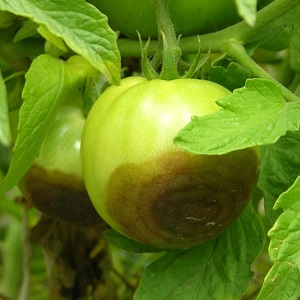 In the early stages of the disease, there is a chance to save the affected plants. To protect the beds from late blight, you need to know its signs:
In the early stages of the disease, there is a chance to save the affected plants. To protect the beds from late blight, you need to know its signs:
- A whitish bloom forms on the leaves and stems, which later darkens and turns into brown or black dry spots. The ground part of the plants begins to wilt.
- Fruits are covered with small black spots. Over time, they grow, acquire a brown tint and begin to rot.
Such signs appear within a couple of days after infection. Their appearance is easy to predict, knowing the causes of the disease:
- Humidity and temperature... In hot dry weather, the spores of the fungus are in a "dormant" state, so under such conditions tomatoes do not get sick. After prolonged rains, cold snaps or temperature changes, late blight is activated, and the probability of plant infection increases to 100%. That is, late blight infection occurs in damp cool weather.
- Poor air exchange and violation of watering rules... Stagnant moisture and lack of air are ideal conditions for the development of late blight.
- The proximity of potato plantings... The fungus hibernates in potato tubers. This culture is a carrier of late blight.
- Unsuitable indicators of soil acidity... Highly alkaline soils are optimal for the development of late blight.
- Lack of micronutrients... This negatively affects the immunity of tomatoes and makes them more susceptible to diseases.
- Introduction excessive nitrogen fertilization... An excess of this substance in the soil stimulates the development of the fungus. Also, this factor provokes the formation of a large amount of greenery, which prevents normal air exchange.
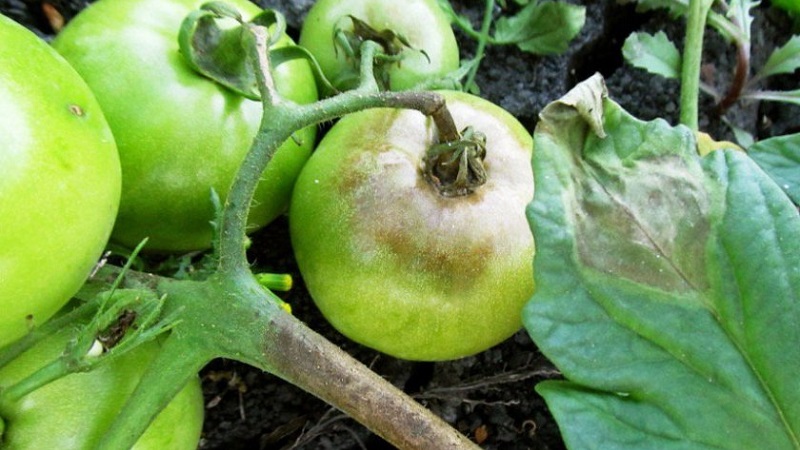
The fewer the factors described around tomatoes, the lower the probability their infection with late blight. Therefore, the main task of prevention is to provide plants with optimal conditions for development.
Plant treatment is possible only in the early stages. development of diseases. If there are many lesions on the plant, such bushes will have to be completely removed and burned.
Methods of dealing with late blight
For the prevention of late blight use three types of funds:
- Folk remedies... They are considered the safest. They are suitable for spraying plants even during the setting and ripening of fruits. They are effective for the prevention of disease, but they will no longer save diseased plants.
- Pharmacy preparations... Less safe than folk remedies, but they do not harm the environment and do not lead to severe poisoning. They are used up to the formation of ovaries. They are used mainly for the prevention of diseases. At the initial stages of the development of diseases, it is possible to get rid of the fungus.
- Chemicals... Many of them are toxic to humans, so they are sprayed with plants before the inflorescences appear. They are rarely used for prevention, but are effective at the initial stages of disease development.
Folk remedies
Folk remedies are the safest and most affordable... They are easy to make with foods found in every home. It is allowed to use such preparations even during the fruiting period of tomatoes, they do not poison the fruits and are safe for the environment.
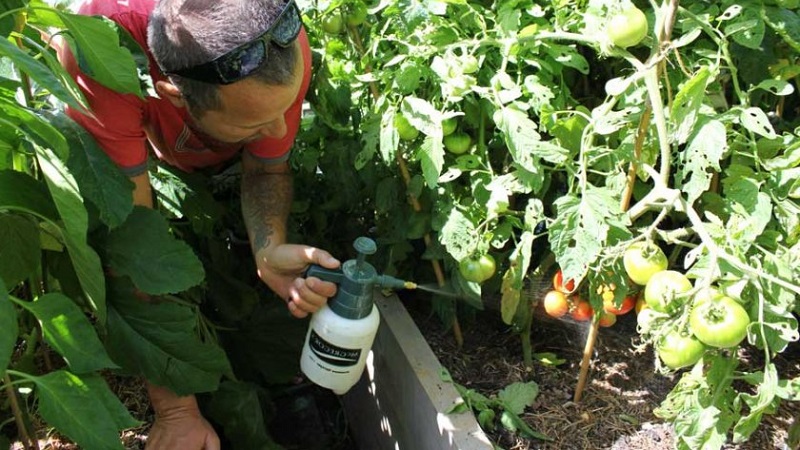
The list includes the most effective recipes for spraying plantings:
- Salt solution... To prepare it, dissolve a glass of salt in 5 liters of water. The resulting product is sprayed with tomato bushes. This salt protection will prevent fungal spores from developing.
- Ash and soap solution... To prepare it, add 2 tbsp to a 5 liter bucket of water. ash. The composition is insisted in three days. Then rub half a piece of laundry soap into the mixture. Plants are sprayed with this mixture every two weeks.
- Dairy products... For 10 liters of water, take 1.5 liters of kefir, sour milk or whey. This mixture is used to treat the ground part of the plant in the evening.
- Garlic infusion... Add 1.5 tbsp to a bucket of water. chopped garlic heads and arrows. The mixture is infused for a day, and then 0.5 tsp is added to it. potassium permanganate. The plant is treated with the agent for the first time before the formation of ovaries, the second - after the appearance of 1 ovary. Then every two weeks.
- Tinder broth... 100 g of mushroom is chopped in a meat grinder and brewed in 1 liter. boiling water. The product is allowed to brew for 3-4 hours, after which it is filtered and used for spraying.
- Copper calcination... The copper wire is calcined, cut into pieces 3-4 cm long, and the stem is pierced with it at a distance of 10 cm from the soil surface. The ends of the wire are folded down. The method is only suitable for adult plants with fruits.
- Soda solution... For 1 liter of water add 1 tbsp. l. soda.
Home remedies are used primarily for prevention against late blight. Their use is also possible if the fungus has infected only a few leaves on the plants. In this case, the affected greens are removed.
Note! Many of the described remedies help to fight not only late blight, but also other diseases and pests.
Chemicals
Chemicals contain a high concentration of substances that kill phytophthora... Their use is effective not only for prevention, but also for the treatment of the disease.
The composition of such products contains harmful substances that penetrate into the soil and groundwater. When tomatoes are bearing fruit, they should not be used. Gardeners try not to use such drugs unless absolutely necessary and in the early stages.
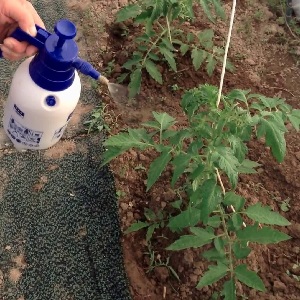 The most popular chemicals for fighting late blight:
The most popular chemicals for fighting late blight:
- Ecopin. Take 1 g of the product on a bucket of water.
- Infinito. In 10 liters of water add 5 tsp. drug.
- "Metaxil". In 5 liters of water, 40 g of the product are diluted.
- "Ditan M-45". 16 g of the substance is added to 10 l of water.
- "Acrobat". In 10 l of liquid, 40 g of the substance are dissolved.
- Fitosporin. In 10 liters of water, 5 g of powder or 15 drops are diluted.
- "Metranidazole" or "Trichopol"... Add 20 crushed tablets to 10 l of water.
These drugs are used not only for spraying tomatoes, but also for irrigation of soil contaminated with late blight.
Pharmacy products
Pharmacy products are used not only to treat people. They I will also help tomatoes with late blight... The main thing is to use them correctly:
- Solution boric acid... For its preparation 1 tsp. boric acid is dissolved in a bucket of water.
- Iodine... Add 30 drops of iodine to a bucket of water.To increase the effectiveness of the product, 1 liter of milk is added to it.
- Potassium chloride solution. For 10 liters of water, take 10 g of potassium chloride.
- "Furacilin"... 20 tablets of "Furacilin" are crushed and dissolved in a bucket of water.
- Potassium permanganate. Tomatoes are sprayed with a light pink solution of potassium permanganate. To do this, take 10 g of powder for 10 liters of water. Such a tool is also used to disinfect the soil, in this case a dark pink solution is prepared.
In terms of effectiveness, pharmaceutical preparations are close to home remedies.... They are used primarily for prevention.
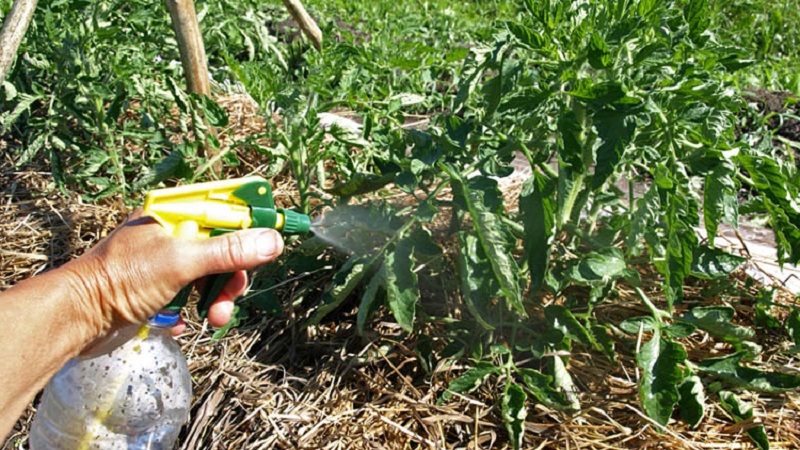
Which remedy to choose depending on the month
At different periods of tomato development, different means are used.... This is important to consider when choosing drugs:
- Chemicals are used before flowering and the formation of the first ovaries. They are used in May and June. They also watered the ground in the fall after harvesting in the beds where tomatoes infected with late blight grew. "Fitosporin" is also used in spring, before plant sediment. This product is also suitable for seed treatment.
- If the plants do not get sick, it is better to use safer home remedies in the early stages of their development. They are sprayed with a solution of potassium permanganate, iodine, fermented milk products, etc. At this stage, salt and copper wire are not used.
- In July and August, when tomatoes bloom and form the first ovaries, it is better to refuse chemicals. In the early stages of the development of diseases, folk recipes will be effective. Especially often for adult tomatoes, copper wire punctures are used.
- If the epidemic of late blight began in late July or August, then the plants are sprayed with a strong salt solution. This method will help preserve the crop, but will lead to wilting of the greenery.
How to treat tomatoes from late blight in the open field
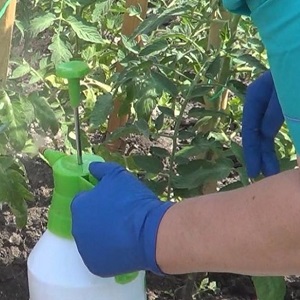 To protect tomatoes from late blight, it is important to adhere to the prevention schedule... This minimizes the likelihood of plant infection:
To protect tomatoes from late blight, it is important to adhere to the prevention schedule... This minimizes the likelihood of plant infection:
- The first treatment is carried out before the appearance of inflorescences. They use both home and chemical preparations.
- The second time the tomatoes are sprayed after the appearance of the first ovary. It is allowed to use only pharmaceutical or folk drugs.
- Then spraying is carried out every two weeks.
This schedule is suitable for the prevention of late blight... If the plants are already sick, treatment is carried out more often.
In the early stages, it is possible to stop the development of late blight... For this, the plants are carefully examined and the affected leaves are removed. Places of cuts are sprinkled with ash.
Bushes with an affected stem are removed completely... They are carried off the site and burned. After that, healthy plantings are processed weekly. The soil is watered with a solution of potassium permanganate, "Fitosporin"Or copper sulfate.
Before tillage means against late blight, the soil is watered with ordinary warm water. This will prevent root rot.
Preventive measures
There are a number of rules that must be followed, to avoid infection of plants with late blight:
- The plants are properly watered. The water should not be cold. It is important to avoid stagnant water. The soil is moistened 1-2 times a week. Tomatoes are watered only at the root, water getting on the leaves will increase the risk of developing diseases.
- The soil is loosened after precipitation and watering. This is necessary to restore normal root air exchange and prevent moisture stagnation.
 Mulching. The beds are covered with a layer of straw, hay or burlap. This will protect the plants from infections and create optimal moisture levels.
Mulching. The beds are covered with a layer of straw, hay or burlap. This will protect the plants from infections and create optimal moisture levels.- During frosts, as well as at the end of summer with nighttime cold snaps, it is recommended to cover the beds at night with film. This will protect the planting from cold dews.
- Keeping crop rotation is another important step. Tomatoes are not planted in the beds where nightshade crops grew last year. It is not recommended to plant potatoes near tomato plantings.
- Disinfection.Before planting, antifungal agents disinfect garden soil and seedling soil, seedling containers, planting material and garden tools. All this carries the spores of the fungus.
- After cold lingering rains, the plants must be sprayed with antifungal agents. The probability that the fungus in such conditions has already managed to infect the bushes is equal to 100%.
- It is important to follow the feeding rules. Potassium and phosphorus are regularly introduced into the soil. The amount of nitrogen fertilization is minimized.
Useful tips from experienced summer residents
Experienced gardeners know several secrets of the fight and prevention of late blight. The list contains the most successful ones.:
- To avoid infestation of tomatoes with late blight, make sure that the soil around the tomatoes is only slightly moistened. To maintain an optimal level of humidity in film shelters, several small holes are made in them.
- Some gardeners to protect tomatoes from late blight spray them with a decoction of wormwood, dandelion or celandine. It is helpful to add a few drops of iodine to this mixture. Such a preparation is not only sprayed on the bushes, but also on the soil. It has antifungal effect and additionally enriches the soil.
- It has been noticed that if you plant wheat, rye, basil or tobacco around tomato beds and between the rows, then the probability of their infection with late blight will significantly decrease.
Reviews
Each grower chooses for himself the best option to combat late blight... Some of them leave useful information in their reviews.
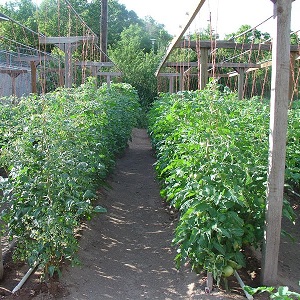 Inna, Moscow: “In our damp, cool climate, late blight is a common problem. I grow mainly cold-resistant varieties with immunity to fungi, but this does not always help. In my experience, fighting late blight when its symptoms appear on plants is useless. I pay maximum attention to prevention. I plant tomatoes in the most sunny areas of the garden, I use drip irrigation. After any precipitation and cold snaps, I must spray the bushes with a solution of furacilin or iodine ".
Inna, Moscow: “In our damp, cool climate, late blight is a common problem. I grow mainly cold-resistant varieties with immunity to fungi, but this does not always help. In my experience, fighting late blight when its symptoms appear on plants is useless. I pay maximum attention to prevention. I plant tomatoes in the most sunny areas of the garden, I use drip irrigation. After any precipitation and cold snaps, I must spray the bushes with a solution of furacilin or iodine ".
Andrey, Belgorod: “I grow tomatoes only outdoors. Late blight usually affects them at the end of August. Be sure to follow the rules of care and spray the bushes with an ash solution and soap. If late blight appears in the ripening process, then I remove the unripe tomatoes, wash them with a weak solution of potassium permanganate, wipe them dry and leave them to dry in the sun. I cut off ripe fruits with spots and use them for cooking hot dishes. ".
Conclusion
Late blight is one of the most dangerous tomato diseases. In the later stages, it is useless to fight it. However, there are effective prevention methods. To do this, it is enough to follow the basic rules of care and avoid factors that contribute to the development of a fungal infection.
Special drugs will be an additional help in prevention. They are sold in the store and are easy to make yourself.